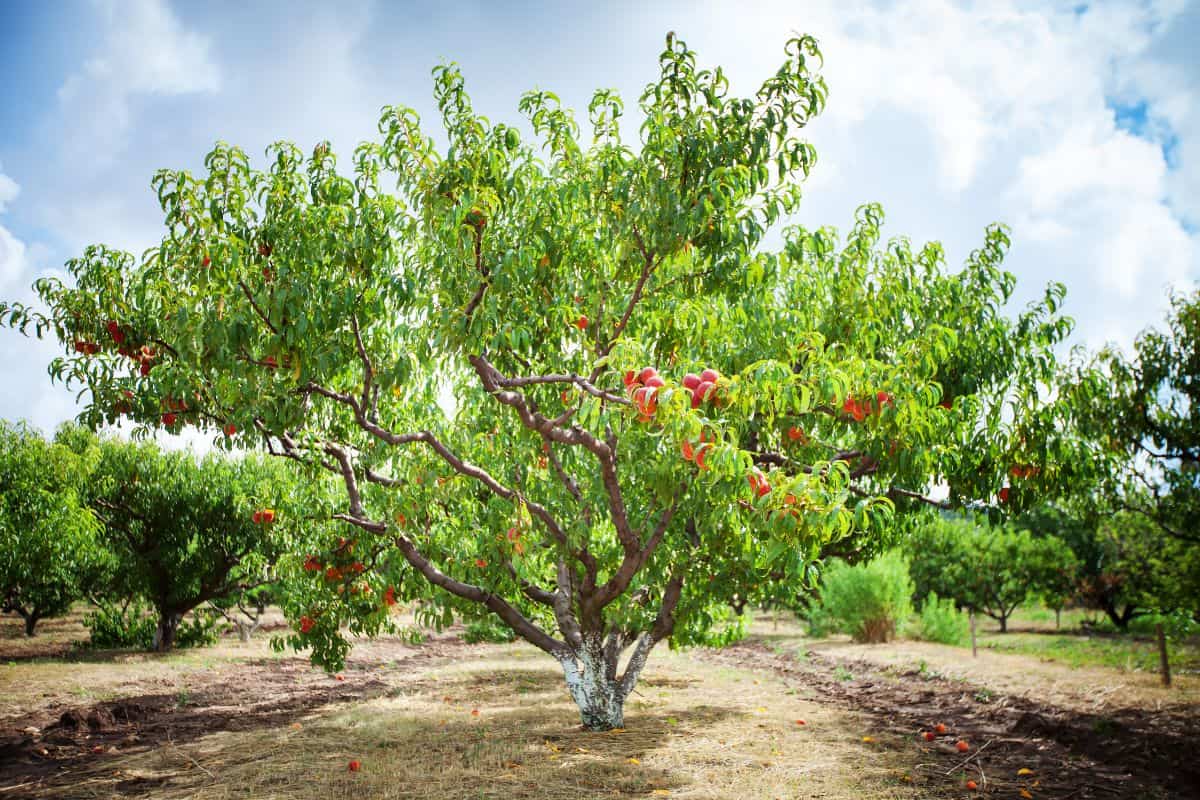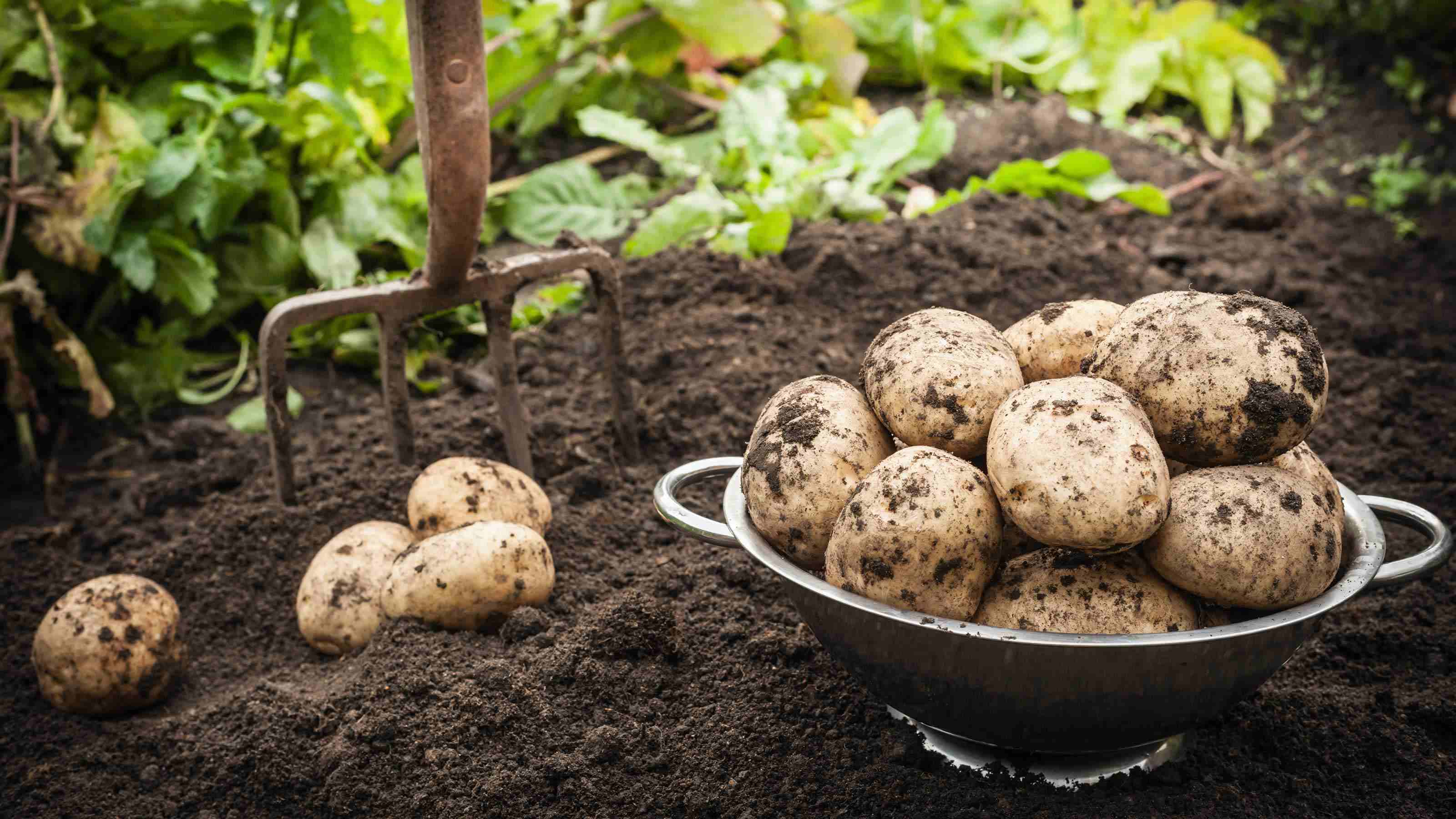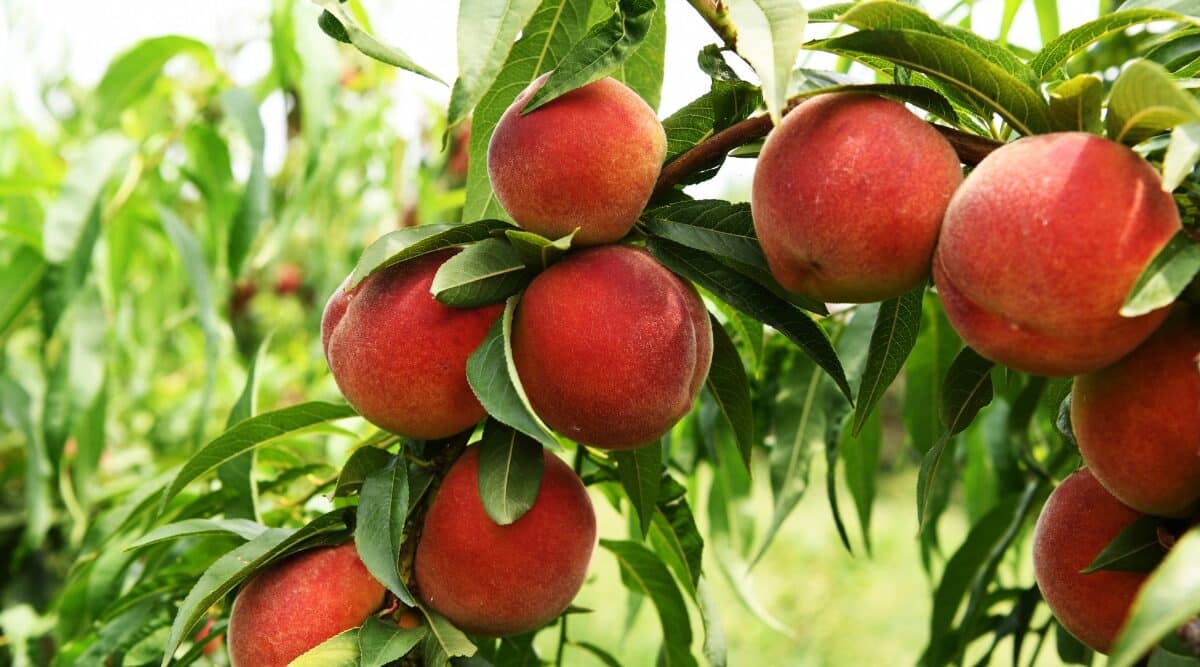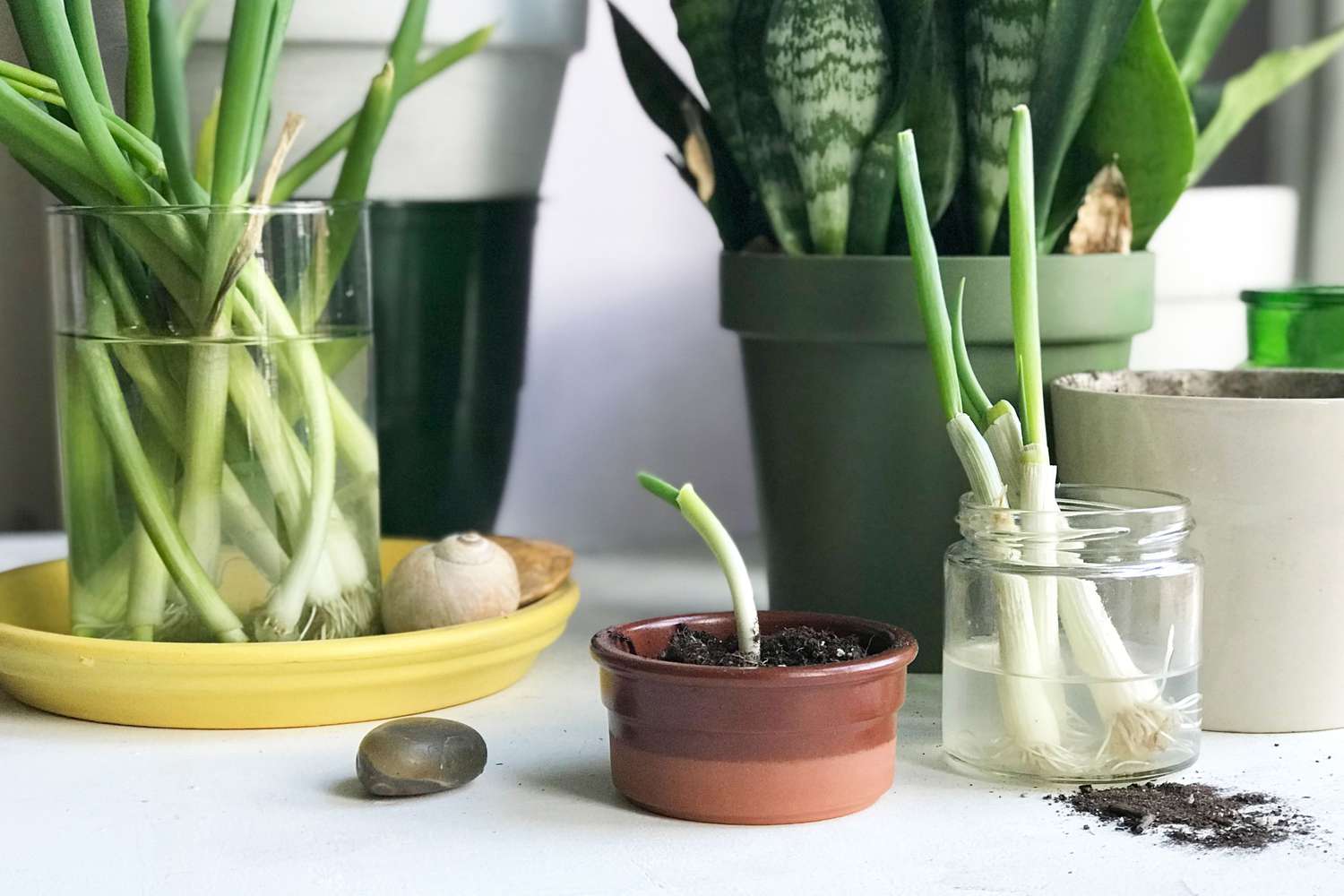Home>Gardening Techniques>Plant Care>How Far Apart To Plant Peach Trees
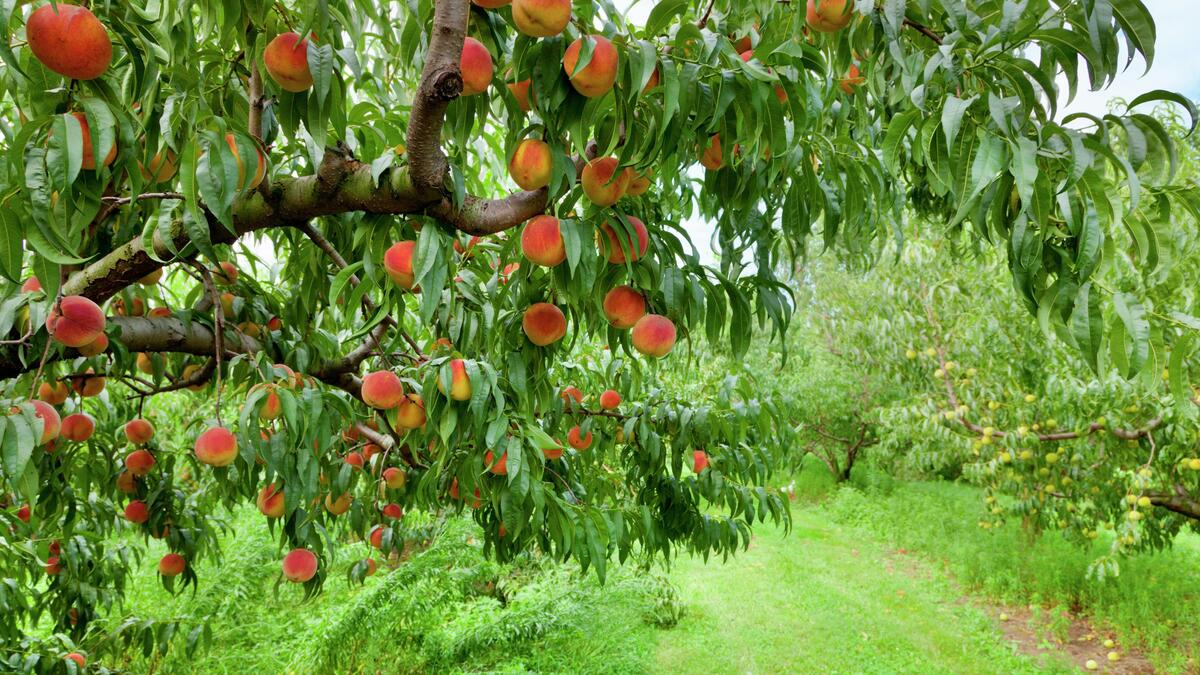

Plant Care
How Far Apart To Plant Peach Trees
Modified: January 22, 2024
Learn the proper spacing for planting peach trees and ensure proper plant care. Expert tips on how far apart to plant peach trees for optimum growth and fruit production.
(Many of the links in this article redirect to a specific reviewed product. Your purchase of these products through affiliate links helps to generate commission for Chicagolandgardening.com, at no extra cost. Learn more)
Table of Contents
Introduction
Planting peach trees in your garden can be a rewarding and fruitful endeavor. Not only do these trees provide a beautiful display of blossoms in the spring, but they also offer delicious and juicy fruit that can be enjoyed throughout the summer. To ensure the success of your peach tree planting, it is important to consider various factors, including the climate and soil conditions in your area, the type of rootstock and variety you choose, as well as the proper spacing recommendations.
While the thought of planting a peach tree may seem daunting, with the right information and techniques, you can set yourself up for a thriving fruit harvest. This article will guide you through the process, providing you with valuable insights and practical tips to ensure your peach trees flourish in your garden.
Throughout this article, we will cover important topics such as selecting the right variety of peach tree, understanding the ideal climate and soil conditions for planting, determining the appropriate spacing between trees, as well as proper planting techniques and care and maintenance. Additionally, we will touch on the importance of pruning, preventing and treating pests and diseases, and how to maximize your harvest and fruit production.
By the end of this article, you will have a comprehensive understanding of how far apart to plant peach trees and the steps involved in ensuring their optimal growth and health. So, let’s delve into the world of peach tree planting and get ready to enjoy a bountiful crop of delicious peaches straight from your own backyard!
Factors to Consider
When determining how far apart to plant peach trees, there are several key factors to take into consideration. These factors will ensure that your trees have the proper environment to grow and thrive, resulting in healthy fruit production. Let’s explore these factors in more detail:
- Climate and Soil Conditions: Peach trees require specific climate and soil conditions to thrive. They prefer areas with moderate winters and long, warm summers. It’s important to choose a variety that is suitable for your specific climate. Additionally, peach trees thrive in well-draining soils with a pH level between 6.0 and 6.5.
- Rootstock and Variety: The rootstock and variety of the peach tree will also play a role in determining the spacing. Some rootstocks have a more compact growth habit, while others are more vigorous. The variety of peach tree you choose will also impact its size and growth rate.
- Spacing Recommendations: Proper spacing between peach trees is crucial to ensure they have sufficient access to sunlight, air circulation, and nutrients. If the trees are planted too closely together, they may compete for resources and become more susceptible to diseases. On the other hand, if the trees are spaced too far apart, it may result in inefficient land utilization and reduced fruit production.
Considering these factors will help you determine the ideal spacing for your peach trees. It’s important to do thorough research and consult with local nurseries or agricultural extension offices to get specific recommendations for your region.
Now that we have explored the factors to consider when deciding how far apart to plant peach trees, we can move on to understanding the ideal spacing guidelines based on these considerations.
Climate and Soil Conditions
The climate and soil conditions in your area are critical factors to consider when planning to plant peach trees. These factors will greatly impact the success and productivity of your trees. Let’s take a closer look at the importance of climate and soil conditions for peach tree growth:
Climate: Peach trees thrive in areas with moderate winters and long, warm summers. They require a certain number of chilling hours during the dormant season to break the bud dormancy and promote healthy growth and fruit production. Different peach varieties have specific chilling requirements, so it is important to choose a variety that is suitable for your climate. Consult with local nurseries or extension offices to determine the best-adapted varieties for your region.
Soil Type: Peach trees prefer well-draining soils with a pH level between 6.0 and 6.5. They do not tolerate excessively wet or poorly drained soils. Sandy loam soils are considered ideal for peach tree growth, as they provide good drainage while retaining sufficient moisture for the roots. Before planting, it is advisable to test your soil’s pH level and make any necessary adjustments to ensure optimal conditions for your trees.
Soil Fertility: In addition to proper drainage and pH levels, peach trees require adequate soil fertility to thrive. Conduct a soil test to determine the nutrient levels in your soil, and make any necessary amendments to provide the right balance of nutrients. Organic matter, such as compost or well-rotted manure, can also be incorporated into the soil to improve its fertility and structure.
Microclimates: Microclimates within your garden or landscape can influence the success of your peach trees. Consider factors such as the location of your trees in relation to buildings or other structures, slopes, or nearby bodies of water. These microclimates can create variations in temperature, airflow, and frost pockets, which can impact the health and productivity of your trees. Observing these microclimates and adjusting your planting strategy accordingly can help optimize the growing environment for your peach trees.
By considering the climate and soil conditions specific to your area, you can create an ideal environment for your peach trees to thrive. Understanding the unique requirements of peach trees and making any necessary adjustments to the soil and planting location will set the stage for healthy growth and abundant fruit production.
Rootstock and Variety
The choice of rootstock and variety for your peach trees is crucial in determining their growth habit, size, and overall performance. Understanding the different options available and selecting the right combination will contribute to the success of your peach tree planting. Let’s explore the factors to consider when it comes to rootstock and variety:
Rootstock: Rootstock is a selected plant onto which the desired peach variety is grafted. The rootstock affects the tree’s growth, vigor, and adaptability to different soil conditions. There are various rootstocks available, each with its own characteristics. Some rootstocks produce more compact, dwarf, or semi-dwarf trees, while others result in larger, more vigorous trees. It is important to choose a rootstock that is suitable for your desired tree size and growth habit.
Variety Selection: There is a wide range of peach varieties available, each with its own unique characteristics. When selecting a variety, consider factors such as fruit size, taste, texture, color, and time of ripening. Additionally, pay attention to disease resistance and chilling requirements. Some varieties are better suited for specific climates or regions, so it is important to choose varieties that are well-adapted to your area. Local nurseries or agricultural extension offices can provide valuable guidance in selecting the best varieties for your region.
When it comes to rootstock and variety selection, it is essential to consider the ultimate size and spacing requirements of the trees. Dwarf or semi-dwarf rootstocks are generally recommended for smaller spaces or home gardens, as they require less space and are easier to manage. Larger rootstocks may be suitable for larger landscapes or commercial orchards where space is not a limitation.
Consulting with local experts or experienced growers in your area can provide valuable insights into the best rootstock and variety combinations that have proven successful in your region. They can provide guidance on the specific characteristics and adaptability of different rootstocks and varieties, helping you make informed decisions for your peach tree planting.
By carefully considering the rootstock and variety for your peach trees, you can ensure that they are well-suited to your desired tree size, growth habit, and fruit characteristics. This selection process will greatly contribute to the overall success and productivity of your peach tree planting.
Spacing Recommendations
Proper spacing between peach trees is essential to ensure they have adequate access to sunlight, air circulation, and nutrients. The correct spacing not only promotes healthier growth but also minimizes the risk of diseases and pests. Let’s explore some general spacing recommendations for peach trees:
Between Trees: The ideal spacing between peach trees depends on various factors such as the anticipated size of the mature trees and the rootstock used. As a general guideline, dwarf or semi-dwarf trees should be spaced approximately 10 to 12 feet apart. For larger, standard-sized trees, a spacing of 15 to 20 feet is recommended. However, it’s best to refer to specific recommendations provided by the nursery or extension office for the particular rootstock and variety you have chosen.
Between Rows: When planting multiple rows of peach trees, leave enough space between the rows for easy access and maintenance. A spacing of 15 to 20 feet between rows is generally sufficient, allowing ample room for equipment and effective management of the trees.
Consider Tree Canopy: While determining the spacing, it is crucial to consider the potential size of the tree’s canopy at maturity. Peach trees require adequate space for their branches and foliage to grow without overcrowding. Providing enough space between trees will allow for proper light penetration and airflow, minimizing the risk of disease development and enabling better fruit production.
It is worth noting that specific spacing recommendations may vary depending on your location, climate, and the specific variety and rootstock being used. Consulting with local professionals or experienced growers in your area is highly recommended to obtain precise recommendations for your particular peach tree planting.
Remember to consider the long-term growth of the trees when planning the spacing. Allow enough room for the trees to reach their full potential and avoid overcrowding, which can lead to poor fruit quality and increased susceptibility to pests and diseases.
By following proper spacing recommendations, you can create an optimal environment for your peach trees to grow and thrive. Adequate spacing ensures that the trees have enough resources and room for their growth, ultimately leading to healthier trees and abundant fruit production.
General Guidelines for Planting
Planting peach trees requires careful consideration and adherence to certain guidelines to ensure their successful establishment and growth. Following these general guidelines will help set your peach trees on the right path for healthy development. Let’s explore some key considerations when it comes to planting peach trees:
Timing: The ideal time to plant peach trees is in the late winter or early spring, before the trees start to break dormancy. This allows the trees to establish their roots before the onset of hot summer temperatures. Avoid planting during periods of extreme heat or cold, as it can stress the young trees.
Location: Choose a well-drained area in your garden that receives full sunlight for at least six to eight hours a day. Peach trees require ample sunlight to thrive and produce sweet and juicy fruits. Avoid low-lying areas where frost or cold air may accumulate, as this can damage the blossoms and young fruit.
Soil Preparation: Prior to planting, prepare the soil by removing any weeds, rocks, or debris. Loosen the soil to a depth of about 18 inches to ensure good drainage and root penetration. Incorporate organic matter such as compost or well-rotted manure into the soil to improve its fertility and structure.
Planting Hole: Dig a planting hole that is wide and deep enough to accommodate the roots of the tree. The hole should be approximately two to three times wider than the root ball and at the same depth. Gently spread out the roots in the hole and backfill with soil, ensuring that the tree is planted at the same level it was previously growing.
Staking: If your peach tree is a young sapling, it may require staking to provide support against strong winds or unstable soil conditions. Place a stake near the tree and secure it with soft ties or tree straps, being careful not to damage the trunk. Regularly check the staking to ensure it remains secure but not too tight to restrict the tree’s movement.
Watering: Proper watering is crucial during the initial stages of tree establishment. Give the newly planted peach tree a deep watering right after planting to settle the soil around the roots. Thereafter, water regularly, aiming for about 1 inch of water per week. Be mindful not to overwater, as excessive moisture can lead to root rot and other problems.
Mulching: Apply a layer of organic mulch, such as wood chips or straw, around the base of the tree. Mulching helps conserve moisture, suppress weeds, and regulate soil temperature. Leave a gap between the mulch and the trunk to prevent moisture-related diseases and rodent damage.
Protection: Take precautions to protect your newly planted peach trees from extreme weather conditions, pests, and diseases. Consider using tree guards, fencing, or netting to shield the trees from animal browsing and invest in appropriate pest and disease control measures to ensure their health and productivity.
By following these general guidelines for planting peach trees, you will provide them with the best chance for successful establishment and growth. With proper care and maintenance, your peach trees will thrive and reward you with a bountiful harvest for years to come.
Proper Planting Techniques
Proper planting techniques are essential for the successful establishment and growth of peach trees. Following these techniques will help ensure that your trees get off to a healthy start and have the best chance of producing abundant fruit. Let’s dive into some key planting techniques to consider:
Preparation: Start by preparing the planting site. Clear the area of any weeds, rocks, or debris. Ensure that the soil is well-drained and fertile. By removing competition and providing optimal soil conditions, you are setting the stage for successful tree growth.
Planting Hole: Dig a hole that is wide and deep enough to comfortably accommodate the tree’s root system. The hole should be slightly wider than the spread of the roots and deep enough so that the tree is planted at the same level it was growing in the nursery. Avoid planting too deep, as this can restrict the tree’s growth and cause health issues.
Roots: Before planting, inspect the tree’s roots. If any damaged or unhealthy roots are present, prune them back to promote healthy growth. Gently loosen the root ball before placing it in the planting hole, ensuring that the roots are spread out evenly. This will encourage proper root development and establishment.
Backfilling: Backfill the planting hole with a mixture of soil and organic matter, such as compost or well-rotted manure. This will help provide essential nutrients and improve soil fertility. Lightly firm the soil as you backfill to eliminate air pockets without compacting it too tightly, as this can restrict root growth.
Watering: After planting, give the tree a deep watering to settle the soil and ensure good root-to-soil contact. Provide regular watering, especially during dry periods, to keep the soil evenly moist but not overly saturated. This will help the tree establish and reduce stress during the initial stages of growth.
Pruning: While not directly related to planting, it is beneficial to prune the tree after planting to encourage a strong and well-balanced framework. Remove any damaged or crossing branches, as well as any water sprouts or suckers. Pruning helps shape the tree and promotes better air circulation and sunlight penetration.
Mulching: Apply a layer of organic mulch around the base of the tree, leaving a gap around the trunk. Mulching helps conserve moisture, regulate soil temperature, and suppress weeds. It also provides a protective layer that minimizes competition and reduces the risk of damage from lawnmowers and trimmers.
Support: Depending on the size and structure of the tree, it may need support in the form of staking or tying to ensure stability. Use soft ties or tree straps to secure the tree to a stake, being careful not to constrict its growth. Regularly check the support system and make adjustments as necessary during the early stages of growth.
By following these proper planting techniques, you can give your peach trees the best possible start. This attention to detail will contribute to their overall health, growth, and fruit production in the years to come.
Care and Maintenance
Proper care and maintenance are vital for the long-term health and productivity of peach trees. By providing the essential care and attention they need, you can ensure that your trees thrive and produce delicious fruit year after year. Let’s explore some important aspects of care and maintenance for peach trees:
Watering: Adequate and consistent watering is crucial, especially during dry periods. Provide the trees with deep, thorough watering to encourage deeper root growth. Avoid overwatering, as it can lead to root rot and other problems. Mulching around the base of the tree helps retain moisture and reduces the need for frequent watering.
Fertilization: Regular fertilization is essential to provide the necessary nutrients for healthy growth and fruit production. Conduct a soil test to determine the nutrient levels, and apply fertilizers accordingly. Generally, it is recommended to fertilize peach trees in early spring before bud break and again in late spring or early summer.
Pruning: Pruning helps maintain the shape and structure of the tree, promotes better air circulation and sunlight penetration, and helps remove diseased or damaged branches. Prune during the dormant season, after the coldest part of winter has passed. Remove any dead, weak, or crossing branches, and thin out overcrowded areas to maintain an open canopy.
Training: Proper training involves shaping the tree’s structure to promote growth and encourage fruiting. This includes training young trees to a central leader or an open vase shape. Regularly monitor the tree’s growth and train new shoots to the desired form. Using stakes, ties, or trellises can help support the branches and encourage proper growth.
Pest and Disease Control: Peach trees are susceptible to various pests and diseases, such as peach leaf curl, brown rot, and aphids. Regularly inspect the trees for any signs of infestation or disease, and take appropriate measures to control and prevent them. This may include using organic or chemical treatments, practicing good sanitation, and implementing pest management strategies.
Thinning: As the tree develops fruit, thinning is necessary to ensure proper fruit size and minimize the risk of overburdening the branches. Thin out excess fruit by removing smaller or damaged fruits. This allows the remaining fruit to receive adequate nutrients and sunlight, resulting in higher-quality fruit and reducing the risk of branch breakage.
Winter Protection: Peach trees are prone to cold injury, especially during harsh winters. Protect the trees by wrapping the trunks with tree wraps or using protective covers. Applying a layer of mulch around the base of the tree can also help insulate the roots and protect against frost heaving.
Regular monitoring, timely intervention, and a proactive approach to care and maintenance will ensure the longevity and productivity of your peach trees. By providing optimal conditions and addressing any issues promptly, you will enjoy healthy trees and a bountiful harvest for years to come.
Pruning Requirements
Pruning is an essential practice for maintaining the overall health, shape, and productivity of peach trees. Proper pruning helps improve air circulation, sunlight penetration, and fruit quality by removing damaged, diseased, or overcrowded branches. Let’s explore the key pruning requirements for peach trees:
Dormant Pruning: Peach trees are typically pruned during the dormant season, when the trees are not actively growing. This is usually done in late winter or early spring, before the buds begin to swell. Dormant pruning allows for better visibility and reduces the risk of disease transmission.
Sanitation: Before starting the pruning process, disinfect your pruning tools with a solution of bleach or rubbing alcohol to prevent the spread of diseases. Make clean, angled cuts just outside the branch collar to promote proper healing and minimize the risk of infection.
Thinning: Thinning is the process of selectively removing branches or shoots to reduce overcrowding and promote better fruit development. Thin out excess branches to allow for proper air circulation and sunlight penetration. Remove any branches that are crossing or rubbing against each other, as they can create wounds and provide entry points for diseases.
Water Sprout Removal: Water sprouts are fast-growing, vertical shoots that often emerge from the trunk or branches of peach trees. These sprouts do not contribute to a healthy structure or fruit production and should be promptly removed. Cut them back to their point of origin to prevent them from competing with the main branches for resources.
Shape and Structure: Peach trees can be trained and pruned to a desired shape and structure. If growing a central leader tree, maintain a dominant central trunk with well-spaced, outward-facing lateral branches. For open vase-shaped trees, encourage an open structure with an evenly distributed scaffold of main branches. Regular pruning helps develop a strong and well-balanced framework.
Annual Maintenance Pruning: In addition to the major pruning done during the dormant season, regular maintenance pruning throughout the year is necessary. This includes removing any dead or diseased wood, as well as trimming back overly vigorous or obstructive branches. It is important to keep the tree’s canopy open to allow for good air circulation and sunlight penetration.
Adjustment Pruning: As your peach tree grows, you may need to make additional pruning adjustments to maintain its size and shape. This can include selectively shortening branches to control height or remove excessive growth. Regularly assess the tree’s structure and make necessary adjustments to ensure optimal growth and productivity.
Remember, pruning should be done with care and caution. It is recommended to consult pruning resources, seek guidance from local horticulturists, or attend workshops to learn proper pruning techniques specific to peach trees. Adhering to the proper pruning requirements will contribute to the overall health, structure, and fruitfulness of your peach trees.
Pest and Disease Control
Peach trees are susceptible to various pests and diseases that can impact their health and fruit production. Implementing effective pest and disease control strategies is crucial for maintaining the vitality of your peach trees. Let’s explore some key aspects of pest and disease control:
Identification: Regularly inspect your peach trees to identify any signs of pests or diseases. Common pests that affect peach trees include aphids, peach tree borers, and plum curculio. Diseases such as peach leaf curl, brown rot, and powdery mildew can also be problematic. Learn to recognize the symptoms and signs of these pests and diseases for timely intervention.
Prevention: Prevention is the first line of defense against pests and diseases. Encourage a healthy growing environment by providing proper care, including regular watering, fertilization, and adequate sunlight. Promote good air circulation by pruning and thinning branches to reduce the risk of fungal diseases. Clear the area around the trees from fallen leaves and debris, as this can harbor pests and diseases.
Cultural Control: Cultural practices such as proper spacing, avoiding over-fertilization, and regular pruning can help reduce the susceptibility of peach trees to pests and diseases. Adequate spacing allows for better airflow and sunlight penetration, creating unfavorable conditions for pests and diseases. Avoid excessive nitrogen fertilization, as it can make the tree more susceptible to certain diseases.
Biological Control: Natural predators and beneficial insects can help control pest populations in your peach trees. Encourage beneficial insects such as ladybugs, lacewings, and parasitic wasps by planting flowers and avoiding the use of broad-spectrum insecticides that can harm them. Consider introducing biological control agents, such as nematodes or predatory mites, to manage specific pests.
Chemical Control: In cases where pests or diseases become a serious problem, chemical control measures may be necessary. Select and apply appropriate pesticides according to the specific pest or disease being targeted. Follow the instructions and safety precautions on the pesticide labels, and apply them at the recommended times for maximum effectiveness. It is important to strike a balance between effectively managing pests and minimizing the impact on beneficial insects and the environment.
Monitoring: Regular monitoring of your peach trees is essential for early detection of pests and diseases. Observe the leaves, branches, and fruits for any signs of infestation or damage. Pay attention to changes in color, texture, or growth abnormalities. Prompt action can prevent the spread of pests or diseases and minimize their impact on the tree’s health and fruit production.
Integrated Pest Management (IPM): Implementing an integrated pest management approach combines multiple strategies to control pests and diseases effectively. IPM involves a combination of preventive measures, cultural practices, biological control, and targeted chemical applications when necessary. By integrating these strategies, you can effectively manage pests and diseases while reducing reliance on pesticides.
By implementing proper pest and disease control measures, you can ensure the health and productivity of your peach trees. Regular monitoring, preventive measures, and appropriate pest management strategies will minimize the impact of pests and diseases on your trees, ultimately leading to a successful harvest.
Harvesting and Fruit Production
Harvesting ripe, juicy peaches from your own trees is one of the most rewarding aspects of growing peach trees. Understanding when and how to harvest ensures that you enjoy the fruits of your labor at their peak of flavor and quality. Let’s explore some key considerations for harvesting and maximizing fruit production:
Ripeness: Peaches are ready to harvest when they reach their optimal level of ripeness. This is typically indicated by a change in color from green to yellow or red, depending on the variety. Gently press the fruit and check for a slight yield, indicating that it is soft and fully ripe. Avoid harvesting peaches when they are still hard and unripe, as they will not have developed their full sweetness and flavor.
Harvesting Technique: To harvest peaches, gently twist and pull the fruit from the tree. Avoid pulling too forcefully, as it can damage the fruit or the tree. Hold the peach near the stem and twist with a slight upward motion. If the peach does not easily detach, it may not be fully ripe, and it is best to leave it on the tree to ripen further.
Timing: Harvesting time can vary depending on the peach variety and local climate. Different peach varieties have different maturation periods, so refer to the specific information provided by the nursery or extension office for your particular variety. In general, peach trees produce fruit from late spring to early summer, with harvesting typically starting around 100 to 120 days after bloom.
Storage: If you have harvested more peaches than you can consume immediately, they can be stored for a short period. Store ripe peaches in the refrigerator to prolong their freshness, as cold temperatures slow down the ripening process. Place them in a breathable container, such as a paper bag or perforated plastic bag, to prevent moisture buildup. Avoid storing peaches near other fruits or vegetables, as the ethylene gas they produce can cause premature ripening and spoilage.
Fruit Thinning: Thinning the fruit on the tree is an important practice to improve fruit quality and size. When the peaches are still small and developing, remove excess fruit by gently twisting or cutting them off. Aim for a spacing of about 6 to 8 inches between peaches on the branch. Thinning allows the remaining fruit to receive more nutrients, sunlight, and air circulation, resulting in larger and better-quality peaches.
Fertilization: Adequate fertilization is crucial for fruit production. Apply a balanced fertilizer recommended for fruit trees in early spring, just before the new growth emerges. This provides the tree with the necessary nutrients to support healthy fruit development. Avoid excessive nitrogen fertilization, as it can lead to more vegetative growth at the expense of fruit production.
Pruning: Pruning plays a role in fruit production by promoting a strong and open structure that allows for better sunlight penetration and airflow. Proper pruning helps maintain the balance between vegetative growth and fruit production. Regularly remove any dead, damaged, or unproductive branches to redirect the tree’s energy toward fruit-bearing branches.
With proper harvesting techniques and attention to fruit production practices, you can enjoy a bountiful harvest of delicious peaches from your own trees. Harvest at the right time, store them properly, and take care of the tree’s overall health to maximize fruit production and savor the sweet rewards of your peach tree.
Conclusion
Growing peach trees can be a rewarding and enjoyable experience, providing you with beautiful blossoms in the spring and delicious fruit in the summer. By considering factors such as climate, soil conditions, rootstock, and variety selection, you can ensure that your peach trees thrive and flourish. Remember to follow proper planting techniques, provide adequate care and maintenance, and implement effective pest and disease control strategies. Utilize pruning techniques to shape the tree and optimize fruit production. Harvest ripe peaches at their peak of flavor and store them properly for prolonged enjoyment. With attention to these important aspects, your peach trees will reward you with abundant harvests year after year.
It is crucial to monitor your trees regularly and seek guidance from local nurseries or extension offices. Their expertise and knowledge specific to your region can provide valuable insights and tips for successful peach tree cultivation. By integrating these practices and continually learning, you will become proficient in caring for your peach trees and optimizing their growth and fruit production.
So, roll up your sleeves, get your hands dirty, and embark on the journey of planting and nurturing peach trees. Whether you are a seasoned gardener or a beginner, with the right information and techniques, you can create a thriving peach orchard in your own backyard. Enjoy the beauty of the blossoms, the satisfaction of growing your own fruit, and the delightful aroma and taste of fresh, juicy peaches straight from your trees. Happy gardening!
